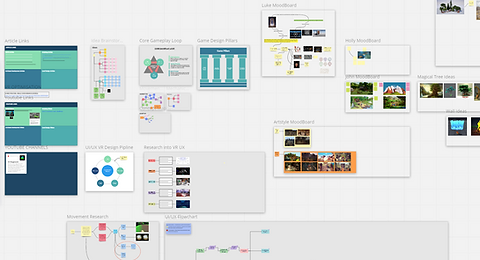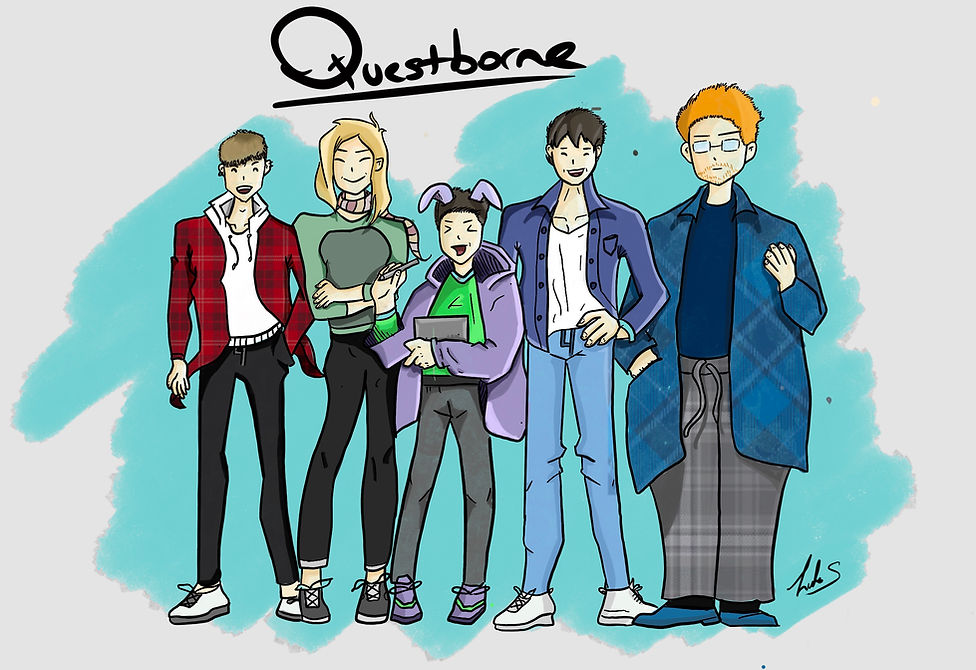
Questborne
VR Hack & Slash
Work
"If you see my diary down there don't read it. There's nothing to see in it, but just don't read it ok!"
- Magical Wizard, Questborne
Questborne is a group project that uses a new generation of gaming technology in the Oculus Quest 2 VR headsets.
Questborne is a hack and slash medieval sorcery game that tells the story of a young adventure that returns back to their village to find it being attacked by monsters. The young adventure most fight their way through the areas collecting magical crystals to destroy the mighty golem.
My Responsibilities and Contributions to this project:
-
Overseeing the Team and managing schedules and deadlines
-
Lead Game Designer/ Scripter - Designing gameplay mechanics from illustrated ideas passed from the team.
-
Assessed how to optimise a new generation of technology and how to create an immersive experience using this technology.
-
Critically planned and developed weekly presentations to critical feedback and strengths of the project.
-
Managing other departments when they would fall behind in deadlines to reduce team stress meaning I picked up other roles such as; Level Design, Lighting & Post Processing, Project Packaging/ Optimisation.



Main Menu - Questborne
The player starts off in an interactable environment allowing them to walk around the menu until they press down on the start button.

Tutorial - Questborne
After the main menu, the player is brought to a training area where they learn the basic combat hack and slash skills before entering the game.


Village - Questborne
Wizard Tower - Questborne
Once the player has learnt the basic hack and slash, their skills will be tested in the village by attacking the gremlins that are destroying the town.
The portal from the village leads to the magical wizard tower where the wizard will introduce themselves and help guide the player to the first fire crystal.

Moutain Pass - Questborne
The mountain pass acts as a "lul" moment for the player as they learn the key principles of the magic and crystal system before continuing to the temple.

Temple - Questborne
The final level is where a player does complete a puzzle to unload the doors to the ice crystals, but once they pick the crystal up they are confronted by the ice golem that they have to beat using all the skills they have gained leading up to this point before completing the game.
The Magic & Crystal mechanic was a critical part of the gameplay, but this was something we struggled to get the design down on as in VR everything is limited to the controls on the player's hands.
I went through various interactions on how the player should activate the message and with this system being so innovative to our project there wasn't much source material out there for references. Nevertheless, using data tables allowed me to store references to the magic and crystals inside the player for easier access.
When making this system I needed to take into consideration gameplay balance and that's when I added a mana system that would drain after a spell was cast and would only ever recharge when it was back in the inventory. This would stop the player from spamming the magic and having to resort back to melee combat.
Magic Development Stage: 1

*Adobe XD Documents produced by UI Designer on team*
The intentional idea was to have the crystals on the hand and allow the player to pick the crystals up from that hand. Still, after much consideration and feedback, this idea was scrapped as they were feeding too much into development time. We needed to take a step back at simplifying the process and still creating something unique and enjoyable for the player.
Magic Development Stage: 2

*Adobe XD Documents produced by UI Designer on team*
Once we took a step back from our original idea, we pushed forward from having the crystal menu on the hands to appearing as diegetic UI in front of the player. Doing this allowed the player to gain access to the inventory on their hand, providing better accessibility in combat.
Magic Development Stage: 3
In Questborne we had a shield mechanic but it didn't have any player feel that's when I added in different visual on the shield for it breaking every time it was it as well as changing its colours to indicate its taking damage to allow players to focus more on combat and not have to worry about trynna figure out what health their shield is on. Small details are what game any game more enjoyable that is why I added in haptic feedback for every time the shield is hit to make the player feel more powerful after every shot is blocked.
Shield Development




How the player moves in VR can result in motion sickness. This was something I had to take heavily into consideration but because no person is the same and everyone has different experience I added in three types of movements:
-
using the left stick to walk
-
snap rotation at 15 or 30 degrees players choice or;
-
smooth rotation (can be changed in option menu)
Main Menu Design
Unlike traditional VR, which uses a flat 2D screen and lasers for menus, I wanted to take a different approach as the technology is still growing in today's age, and I didn't want to break the player's immersion.
This is why Questborne uses a fully interactable environment that the player can move around in, interacting with the buttons inside the world.

Training Area Design
Before the player enters the world of Questborne and begins their adventure, it was my job to make sure they learnt the basic hack and slash skills, so they knew how to fight off groups of enemies. This was done through a narrative aspect and visual use, with a narrative voice explaining the steps to the player and signs showing the player each step. Then training dummies would spawn in front of the player to practice these skills until they felt comfortable.

Lighting & Post - Processing
It was my job to go through my own and everyone else level to set up lighting and post-processing. The way users experience a level visual has a significant impact on gameplay as if the lighting is too harsh and bright, it can strain the user's eyes. Still, if it is too dull and glumpy, it can have a negative effect on the users.


Miro
Miro was amazing for planning and keeping track of the team's tasks as I was able to see what everyone was working on and if anyone had any missed deadlines. To manage a group like this, I didn't want anyone to feel bad about missing a deadline if I saw they had worked to produce, so I would sit down with them and ask what I could do to make their life easier. This approach seemed to work amazingly as it created a better relationship with my team, which produced a lot more work than anyone could have ever expected.

Github
With changes rapidly happening within Questborne, we used a source control called GitHub where every team member could push and pull the project, allowing us to work seamlessly alongside one another as long as no one was working on the same file at the same time. To manage communication, we used discord as it allowed us to have multiple channels to ensure information was being passed to the right person, as well as a weekly meeting where people could share their screen and show what they had been working on.

Weekly Presentations
Every week, the other co-team lead and I would put together a weekly presentation of all the tasks the team has been working on and our thought process behind each development stage. This allowed us to get critical feedback from peers, tutors and industry contacts such as Incendiary Blue.

Team
